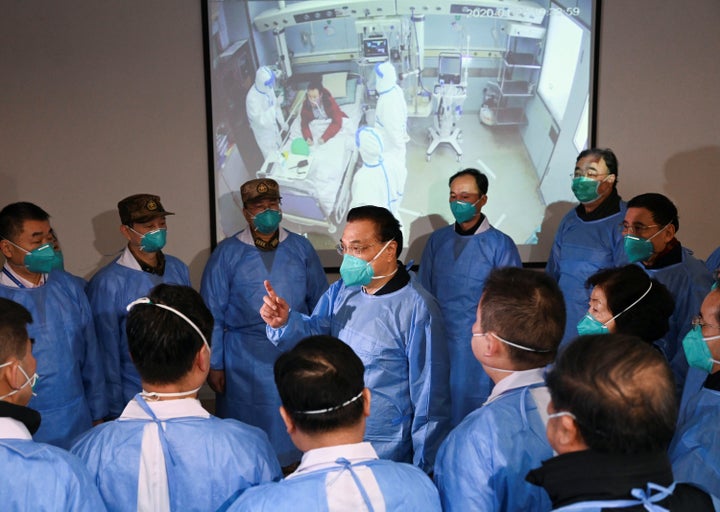Amid a spate of newly reported cases of the coronavirus strain medical authorities believe originated in the Chinese city of Wuhan, several social media users have filled the vacuum of information about the illness with false narratives and unproven claims.
According to The New York Times, as of Monday, China had confirmed 2,744 cases of coronavirus, with at least 81 deaths as a result of the virus. As cases continue to emerge around the world, including five that were confirmed in the U.S., health authorities are working to prevent this new strain of coronavirus from becoming a pandemic.
A flood of fake news surrounding the virus hasn’t helped their efforts.
In one instance reported by BuzzFeed News, a Jan. 21 tweet from a user positing that the coronavirus was released intentionally was “liked” and retweeted thousands of times. Jordan Sather, a YouTube user who frequently shares hoaxes and unproven claims, linked to a 2015 patent for a coronavirus vaccine filed by a U.K.-based health institute. Sather suggested that well-connected pharmaceutical companies intentionally unleashed the disease on the public to stir up concern and sell a cure.
“Was the release of this disease planned?” Sather’s tweet read. “Is the media being used to incite fear around it? Is the Cabal desperate for money, so they’re tapping their Big Pharma reserves?”
In reality, it is standard procedure for pharmaceutical companies to file patents preemptively, as the particular firm did. According to BuzzFeed, the coronavirus vaccine in this particular patent wasn’t even for a strain affecting humans.

Nonetheless, the outlet said several versions of the original misinformation were shared by pro-Trump conspiracy theorists and anti-vaccination groups on Facebook, expanding its reach by at least thousands of people. By the time the hoax had reached its zenith, several social media users were claiming without evidence that billionaire philanthropists Bill and Melinda Gates took part in the scheme.
Other instances of coronavirus fear-mongering on social media have included posts suggesting the government is withholding a vaccine for the latest strain of the virus (the virus is fairly new and there is currently no vaccine to prevent contracting it), posts misidentifying people as victims of coronavirus, and posts drastically inflating the number of those infected with the new strain of coronavirus.
Each of these claims has been shared hundreds, if not thousands, of times on social media. Much of the misinformation related to the coronavirus relies on what social media experts call evidence collages, which are images that include an assortment of news clippings and images ― both real and fake ― to push a false narrative.
In a 2019 report, the research institute Data and Society said social media users ought to be wary of people using evidence collages and a number of other techniques to spread misleading ― or outright false ― information.
In a statement to HuffPost, a Facebook spokesperson said, “Several of our third-party fact-checking partners around the world have rated content false so we are dramatically reducing its distribution and people who see this content, try to share it, or already have, are alerted that it’s false. This situation is fast-evolving and we will continue our outreach to global and regional health organizations to provide support and assistance.”
Twitter did not respond to HuffPost’s request for comment by time of publishing.
For more information about the new coronavirus strain, both the World Health Organization and the U.S. Centers for Disease Control and Prevention have up-to-date resources.
Calling all HuffPost superfans!
Sign up for membership to become a founding member and help shape HuffPost’s next chapter
Credit: Source link